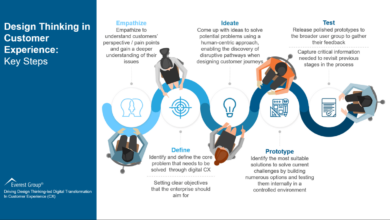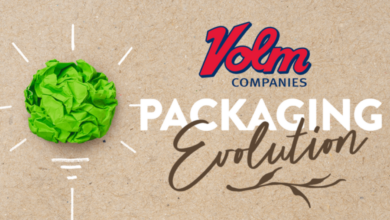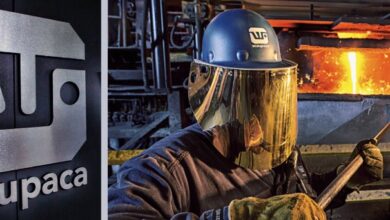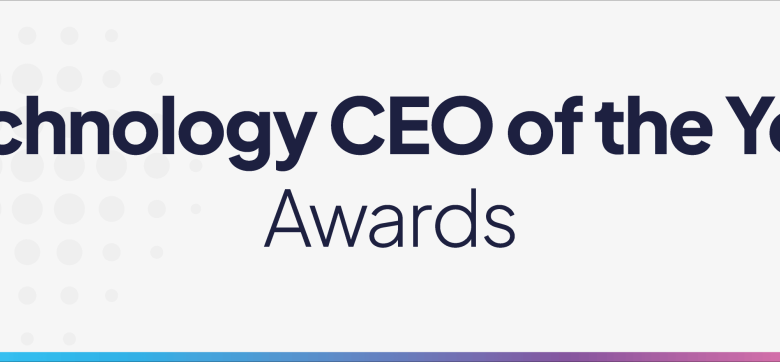
Establishing and Leading a Sensor Tech Company
Establishing and leading a sensor tech company is a challenging yet rewarding endeavor. This journey requires a deep understanding of the market, meticulous planning, and a team of skilled professionals. From initial market analysis to securing funding and building a robust supply chain, the process demands careful consideration of every aspect. This post delves into the key elements needed for success, from product development to regulatory compliance.
The sensor technology market is dynamic and competitive. Understanding current trends, potential challenges, and the competitive landscape is critical. We’ll explore the various sensor types, their applications, and the factors driving market growth. We will also discuss critical aspects like funding, team building, and intellectual property protection. This comprehensive guide provides a roadmap for entrepreneurs and leaders seeking to navigate the complexities of launching and managing a sensor tech company.
Market Analysis
The sensor technology market is experiencing explosive growth, driven by advancements in miniaturization, improved accuracy, and declining costs. This burgeoning sector is finding applications across diverse industries, from automotive and consumer electronics to healthcare and industrial automation. Understanding the current landscape, key trends, and competitive forces is crucial for navigating this dynamic market.The sensor technology market is characterized by a complex interplay of established players and emerging startups.
Competition is fierce, with major players vying for market share through innovation, strategic acquisitions, and expanding product portfolios. Analyzing the competitive landscape and identifying key strengths of different companies is paramount for strategic decision-making.
Current Market Landscape
The sensor technology market is vast and encompasses numerous types of sensors. From basic temperature and pressure sensors to more complex image and motion sensors, the variety is staggering. This breadth of choice allows for customization and tailoring of sensors for specific applications, driving innovation and efficiency across diverse sectors. The global sensor market is dominated by established players like Texas Instruments, Infineon Technologies, and Analog Devices.
These companies possess significant R&D capabilities, extensive manufacturing facilities, and established supply chains.
Key Trends and Future Projections
Several key trends are shaping the future of the sensor technology market. The increasing demand for smart devices, the rise of the Internet of Things (IoT), and the need for precision in industrial automation are driving significant growth in the sensor market. Predictions indicate that the demand for sensors will continue to increase exponentially over the next decade, fueled by the ongoing digital transformation and growing need for data-driven decision-making.
Examples include the use of sensors in self-driving cars, smart homes, and industrial automation systems.
Competitive Landscape
The sensor technology market is highly competitive. Major players leverage their expertise in design, manufacturing, and supply chain management to maintain a strong market presence. Companies like Bosch Sensortec and STMicroelectronics are known for their innovative solutions and extensive product portfolios. Smaller startups are often focused on niche markets, leveraging specialized technologies to compete effectively.
Sensor Types and Applications
Different types of sensors cater to specific needs and applications. Pressure sensors are crucial for monitoring fluid levels and pressure in various systems. Temperature sensors are essential for controlling and monitoring thermal conditions. Motion sensors are vital for security systems, gaming, and robotics. The diverse range of applications for each sensor type is remarkable.
Factors Influencing Market Growth
Several factors are driving the growth of the sensor technology market. The increasing demand for automation, the need for precise data collection, and the development of sophisticated algorithms are key drivers. Challenges include maintaining accuracy and reliability in harsh environments, ensuring cost-effectiveness, and managing the complexity of sensor integration.
Sensor Types, Applications, and Market Sizes (Estimated)
| Sensor Type | Applications | Estimated Market Size (USD Billion) |
|---|---|---|
| Pressure Sensors | Automotive, industrial automation, medical devices | 15 |
| Temperature Sensors | HVAC systems, industrial processes, environmental monitoring | 10 |
| Motion Sensors | Security systems, consumer electronics, robotics | 12 |
| Image Sensors | Cameras, medical imaging, industrial inspection | 20 |
| Proximity Sensors | Automotive, industrial automation, consumer electronics | 8 |
Company Formation and Structure
Launching a sensor technology company requires careful planning and execution, considering legal, financial, and operational aspects. Success hinges on a well-defined business model, a robust organizational structure, and a realistic funding strategy. The landscape of sensor technology is dynamic and competitive, demanding innovation and adaptability.
Legal and Regulatory Aspects
Establishing a sensor technology company involves navigating a complex web of legal and regulatory requirements. This encompasses intellectual property protection, data privacy regulations, and compliance with industry-specific standards. Thorough legal counsel is crucial to ensure the company operates within the bounds of the law and protects its interests. Specific regulations may vary based on location, so it’s vital to consult with legal professionals specializing in technology and the applicable jurisdiction.
These regulations often involve patent filings, trademarks, and compliance with standards like ISO.
Business Models
Sensor technology companies can adopt various business models. The choice depends on the company’s resources, market position, and strategic goals. Common models include product development, contract manufacturing, and licensing.
- Product Development: Companies developing and manufacturing their own sensors have complete control over the product lifecycle, design, and quality. This model allows for greater customization and potential for higher profit margins, but it demands substantial investment in research and development, manufacturing infrastructure, and marketing. Examples include companies like Analog Devices or Texas Instruments, known for their broad portfolio of sensor products.
- Contract Manufacturing: This model involves outsourcing the manufacturing process to external partners. Companies focus on product design and marketing, while production is handled by specialized manufacturers. This reduces upfront capital expenditure and allows for rapid scaling. However, quality control and intellectual property protection are crucial considerations. Companies like Honeywell or Bosch leverage contract manufacturers for various sensor production needs.
- Licensing: Companies can license their sensor technology to other manufacturers, generating revenue without direct production involvement. This is suitable for companies with strong intellectual property but limited manufacturing capacity. Royalties from licensed use can be a significant source of income. This model can be seen in companies focused on specialized sensor technology or algorithms.
Financial Considerations and Funding Strategies
Securing funding is essential for launching a sensor technology company. Funding sources range from venture capital to angel investors, grants, and loans. Understanding the financial needs, including initial investment for research, development, and manufacturing equipment, is critical for securing the right funding.
Organizational Structure and Roles
A well-structured organization is key for efficient operations and effective decision-making in the sensor technology sector. Essential roles include research and development, engineering, manufacturing, sales, marketing, and finance. Clear lines of communication and collaboration between these roles are crucial for project success.
| Role | Responsibilities |
|---|---|
| CEO | Overall strategic direction, leadership, and decision-making |
| CTO | Technical leadership, overseeing R&D, product development, and technology |
| COO | Operations management, production, and supply chain |
| Sales & Marketing | Identifying and acquiring customers, building brand awareness |
| Finance | Financial planning, budgeting, and reporting |
| Engineering | Design, development, testing, and maintenance of sensors |
Comparison of Business Models
| Business Model | Advantages | Disadvantages |
|---|---|---|
| Product Development | Full control over product lifecycle, potential for high profit margins, customization | High initial investment, longer development cycles, risk of market miscalculation |
| Contract Manufacturing | Lower initial investment, faster time to market, scalability | Limited control over production, potential quality issues, intellectual property risks |
| Licensing | High revenue potential with low production costs, quick revenue generation | Lower control over product, reliance on licensees, potential for royalty disputes |
Product Development and Innovation: Establishing And Leading A Sensor Tech Company
Bringing a new sensor technology product to market is a complex process requiring careful planning, meticulous execution, and a deep understanding of the technological landscape. This involves not just developing the sensor itself, but also designing the entire system, anticipating its use cases, and ensuring it meets market needs. This phase necessitates a thorough understanding of the entire product life cycle, from initial concept to final deployment.The journey of developing a sensor technology product often begins with identifying a specific market need or opportunity.
This could be addressing a gap in existing solutions, enhancing an existing technology, or creating an entirely new category. The subsequent stages involve careful analysis of the technological feasibility, market demand, and potential return on investment. A robust understanding of the target audience and their needs is crucial to ensure the product meets the expectations of the end-users.
Stages in Developing a New Sensor Technology Product
The development of a new sensor technology product involves distinct stages. These stages typically include: idea generation, feasibility studies, design and prototyping, testing and validation, manufacturing planning, and finally, commercialization. Each stage builds upon the previous one, requiring careful consideration of both technical and business aspects. Effective communication and collaboration between various teams are critical for success.
Product Design and Prototyping Methodologies
Several methodologies can be employed in the design and prototyping process. Design thinking, a human-centered approach, focuses on understanding user needs and iterating on designs based on feedback. Agile methodologies, which emphasize flexibility and adaptability, are particularly well-suited for projects with evolving requirements. Prototyping allows for rapid iteration and testing of different design choices. Using rapid prototyping techniques can quickly generate functional models, allowing for early user feedback and adjustments.
Technological Advancements Driving Product Innovation
Key technological advancements in sensor technology continually drive product innovation. Advancements in materials science, such as the development of new, highly sensitive materials, are vital for creating more accurate and reliable sensors. Miniaturization techniques are also crucial for developing smaller, more portable sensors, expanding the potential applications. The integration of artificial intelligence and machine learning is transforming sensor data analysis, enabling more sophisticated and automated applications.
Launching and leading a sensor tech company is a fascinating challenge, demanding a deep understanding of emerging technologies. The future of sustainable energy, for example, heavily relies on alternative materials like graphene and other novel compounds, as detailed in this insightful piece on the future of sustainable energy looks to alternative materials. Ultimately, a strong grasp of these advancements is crucial for a successful sensor tech company looking to innovate and thrive in the coming years.
Furthermore, advancements in wireless communication and data transmission are making sensor data collection and analysis more efficient.
Intellectual Property Protection for Sensor Tech Products
Protecting intellectual property (IP) is essential for safeguarding the investment and innovation in sensor technology. Patents, trademarks, and copyrights can be used to safeguard inventions, brand names, and unique designs. A thorough IP strategy should be developed from the initial stages of product development. The protection of intellectual property ensures that the company retains control over its innovations and prevents others from using them without permission.
Quality Control and Testing Procedures in Sensor Technology
Ensuring the quality and reliability of sensor technology products is paramount. Rigorous testing procedures are essential to verify the performance characteristics, accuracy, and reliability of the sensors. These tests must encompass a wide range of environmental conditions and usage scenarios to ensure the sensor’s robustness. Maintaining strict quality control throughout the manufacturing process is crucial to ensure the consistent performance of the products.
Testing and calibration protocols must be meticulously documented to ensure traceability and reproducibility.
Patenting Sensor Technologies
The process of patenting sensor technologies typically involves several steps. First, a thorough patent search is conducted to ensure that the invention is novel and non-obvious. A patent application is then drafted and filed with the relevant patent office, which is specific to the country where protection is sought. The patent application must contain a detailed description of the invention, including its technical specifications and potential applications.
A patent attorney can be a valuable asset during this process, ensuring compliance with patent laws and the successful prosecution of the application. The time required for patent approval can vary depending on the complexity of the technology and the backlog of applications at the patent office.
Manufacturing and Supply Chain Management
Building a successful sensor technology company hinges on a robust manufacturing and supply chain. This crucial aspect ensures consistent product quality, competitive pricing, and timely delivery to customers. Effective management of the entire process, from raw material sourcing to final product packaging, is paramount for long-term profitability and market competitiveness.
Manufacturing Processes for Different Sensor Types
Various sensor types require distinct manufacturing processes. Microelectromechanical systems (MEMS) sensors, for example, often involve intricate microfabrication techniques, such as photolithography and etching. These processes create tiny mechanical structures and electrical components on a silicon chip. Optical sensors, conversely, might utilize specialized deposition techniques to create precisely engineered optical components and structures. Different material combinations and assembly techniques are also crucial for different sensor types.
Critical Aspects of a Robust Supply Chain
A robust supply chain is essential for timely delivery of components and raw materials. Critical elements include strategic partnerships with reliable suppliers, efficient inventory management systems, and contingency plans for potential disruptions. These plans address issues like material shortages, natural disasters, or unexpected production delays. For instance, a reliable supply chain ensures that a sensor manufacturer can quickly adapt to fluctuations in demand and maintain consistent production output.
Sourcing Strategies for Materials and Components
Sourcing strategies must prioritize quality, cost-effectiveness, and long-term reliability. Evaluating potential suppliers based on their track record, certifications, and capacity to meet specific production requirements is crucial. For example, exploring alternative materials with similar performance characteristics but lower costs can significantly impact the product’s price point. Diversification of suppliers can mitigate risks associated with single-source dependencies.
Importance of Quality Control in Manufacturing
Maintaining consistent quality throughout the manufacturing process is critical for sensor performance and customer satisfaction. Rigorous quality control measures, including in-process inspections, statistical process control (SPC), and final testing, ensure that products meet predetermined specifications. Implementing quality control systems helps identify and rectify potential defects early in the production cycle, minimizing waste and ensuring product reliability.
Different Manufacturing Processes for Sensor Production
| Sensor Type | Manufacturing Process | Description |
|---|---|---|
| MEMS Accelerometer | Microfabrication | Complex process involving etching, deposition, and lithography to create tiny mechanical structures on a silicon chip. |
| Optical Proximity Sensor | Deposition and Assembly | Precisely engineered optical components and structures are deposited and assembled for detecting proximity. |
| Pressure Sensor | Micromachining and Packaging | Creating micro-scale structures to measure pressure, followed by careful packaging to ensure protection. |
| Infrared Sensor | Material Deposition and Calibration | Creating a sensing material for infrared radiation detection, followed by precise calibration for accuracy. |
Comparing Suppliers
| Supplier | Strengths | Weaknesses |
|---|---|---|
| Supplier A | High-quality materials, excellent delivery times, and strong technical support. | Higher pricing compared to other options. |
| Supplier B | Competitive pricing, large inventory, and global presence. | Variable quality control, occasional delivery delays. |
| Supplier C | Specialized expertise in specific sensor components, shorter lead times. | Limited product range, geographically concentrated. |
Sales and Marketing Strategy
A strong sales and marketing strategy is crucial for any sensor technology company to thrive in a competitive market. It’s not just about selling products; it’s about building a brand that resonates with potential customers, establishing trust, and effectively communicating the value proposition of your sensor solutions. This strategy needs to be tailored to specific target markets, understanding their unique needs and pain points.The sensor technology market is highly specialized, demanding a sophisticated understanding of technical specifications and applications.
Effective marketing must go beyond generic advertisements and delve into the specific requirements of each target segment. Successful companies understand the importance of building lasting relationships, demonstrating expertise, and delivering exceptional customer service.
Brand Identity
A strong brand identity is essential in the sensor technology market. It establishes recognition and trust among potential customers, differentiates the company from competitors, and fosters brand loyalty. A well-defined brand identity encompasses a company’s values, mission, and unique selling propositions (USPs). A professional and trustworthy brand image will significantly influence purchasing decisions. For instance, a company known for high accuracy and reliability in sensor technology will attract customers seeking precision in their applications.
Marketing Strategies for Target Customers
Reaching target customers requires tailored marketing strategies. These strategies must consider factors like industry segments, specific applications, and customer needs. Direct engagement with potential clients through webinars, industry events, and personalized demonstrations is vital for building trust and rapport. Targeted advertising campaigns on specialized industry platforms, leveraging industry publications, and sponsoring relevant events can generate leads.
Building Relationships with Potential Clients
Building strong relationships with potential clients is paramount. This involves understanding their specific needs, offering tailored solutions, and providing exceptional customer service. Building rapport through personal interactions, attending industry events, and demonstrating technical expertise will create long-term partnerships. Providing comprehensive technical support and documentation, as well as quick response times to inquiries, are key to establishing trust and loyalty.
Effective Sales Materials
Creating effective sales materials is critical for conveying the value proposition of sensor solutions. These materials must clearly articulate the product’s benefits, features, and technical specifications in a concise and engaging manner. Sales presentations should incorporate compelling visuals, clear data points, and case studies that highlight successful applications. Well-designed brochures, datasheets, and online product pages should be readily available and easily accessible.
Leveraging Online Marketing Platforms
Online marketing platforms are essential tools for reaching target customers. A well-designed website, optimization, and social media presence are vital. Engaging content, such as blog posts, technical articles, and case studies, can position the company as a thought leader in the sensor technology field. Utilizing online advertising campaigns, targeted at specific industry segments, can significantly increase brand visibility.
Active participation in relevant online forums and communities can establish industry credibility and build connections with potential clients.
Summary of Marketing Channels
| Marketing Channel | Effectiveness | Description |
|---|---|---|
| Industry Events | High | Attending and exhibiting at industry trade shows and conferences to network and demonstrate products. |
| Targeted Advertising | Medium | Placing ads on industry-specific websites and publications to reach specific target audiences. |
| Content Marketing | High | Creating and distributing valuable content, such as blog posts, articles, and case studies, to attract and engage target audiences. |
| Social Media Marketing | Medium | Utilizing platforms like LinkedIn, Twitter, and industry-specific groups to engage with potential clients and build brand awareness. |
| Direct Sales | High | Building relationships with key accounts and providing tailored solutions to address their specific needs. |
| Online Product Pages | Medium | Creating informative and engaging product pages with detailed specifications, diagrams, and case studies. |
Funding and Investment
Securing adequate funding is crucial for any startup, especially in a technology-driven field like sensor technology. The initial investment phase requires careful planning and a clear understanding of the financial landscape. Attracting investors demands a compelling narrative about the company’s vision, potential, and market opportunity.
Financial Resources Required
Establishing and operating a sensor tech company necessitates substantial financial resources, encompassing various stages. Initial capital is needed for research and development, prototype creation, intellectual property protection, and initial marketing efforts. Ongoing operational expenses include salaries, rent, utilities, and inventory. Scaling operations requires additional investment for manufacturing upgrades, distribution networks, and sales team expansion. A thorough financial projection is essential for estimating the required capital at each stage, factoring in potential growth and market fluctuations.
Funding Options for Sensor Tech Startups
Several avenues are available for securing funding for sensor tech startups. These include bootstrapping, angel investors, venture capital, crowdfunding, and grants. Each option carries distinct characteristics in terms of investment amount, time commitment, and level of control relinquished to investors. Understanding these nuances is vital for making informed decisions.
Building and leading a sensor tech company is a challenge, requiring a deep understanding of technology and a knack for business. It’s a constant balancing act, similar to the work involved in a healthcare facility like the Stevens Points Breast Care Center, which recently received redesignation here. This achievement highlights the importance of maintaining high standards and adapting to evolving needs, a lesson I find incredibly relevant to my own journey in the sensor tech industry.
Ultimately, both fields require precision, innovation, and a commitment to excellence.
- Bootstrapping: Utilizing personal savings and revenue generated from initial sales to fund the company’s operations is a common method. This approach allows for complete control and avoids the complexities of external financing. However, it may limit growth potential if external funding is required for scaling.
- Angel Investors: Individual investors who provide capital in exchange for equity in the company. Angel investors often have industry expertise and can offer valuable mentorship and guidance. Finding the right fit is essential, as different angels have different investment criteria and risk tolerances.
- Venture Capital: Venture capital firms invest in high-growth startups with significant potential. This funding often involves substantial equity dilution, but provides access to a network of experienced professionals and substantial capital for rapid expansion.
- Crowdfunding: Raising capital through online platforms, allowing many small investors to contribute to the project. This method can be a good way to generate initial interest and build a community around the product. However, it may not be suitable for large-scale funding needs.
- Grants: Government or industry grants may be available to startups with innovative projects. These options often have specific criteria and require substantial paperwork. Exploring such opportunities can be beneficial, as the funding is usually non-equity based.
Importance of Investment Capital for Growth
Securing investment capital is critical for scaling sensor tech companies. Funding allows for expansion into new markets, hiring skilled personnel, developing advanced technologies, and improving manufacturing processes. This is essential for achieving a competitive edge in the dynamic sensor market. Without sufficient capital, a company may struggle to maintain its position, hindering future growth.
Presenting a Compelling Investment Pitch
A compelling investment pitch is crucial for attracting investors. It must clearly articulate the company’s vision, the market opportunity, the proposed solution, the team’s expertise, the financial projections, and the exit strategy. Highlighting the unique value proposition, intellectual property, and competitive advantages is essential. A well-structured presentation with concise and impactful messaging will increase the likelihood of securing funding.
Building and leading a sensor tech company is a fascinating challenge, demanding innovation and a deep understanding of the market. But as we develop these technologies, it’s crucial to consider their broader impact, like the vital work of organizations dedicated to preserving our environment. For example, sustaining our waters the fox wolf watershed alliance is tackling crucial issues related to water quality, demonstrating how innovative solutions can benefit ecosystems.
Ultimately, a successful sensor tech company needs to be mindful of its environmental footprint and partner with organizations like this to build a sustainable future.
Funding Options Table
| Funding Option | Associated Costs | Associated Risks |
|---|---|---|
| Bootstrapping | Low initial costs, potentially high long-term costs | Limited growth potential, dependence on initial revenue |
| Angel Investors | Equity dilution, potential for disagreements | Limited capital, need to find suitable investors |
| Venture Capital | Significant equity dilution, loss of control | High capital, high expectations |
| Crowdfunding | Platform fees, limited capital | Time-consuming, uncertain success |
| Grants | Administrative burden, strict criteria | Limited funding, potential bureaucratic hurdles |
Securing Venture Capital Funding
Securing venture capital funding involves a rigorous process. This includes developing a detailed business plan, creating financial projections, identifying suitable investors, and presenting a compelling pitch. Building relationships with venture capitalists and attending industry events is essential for increasing visibility and generating interest. A strong track record, a compelling market opportunity, and a well-defined exit strategy are key elements for securing venture capital.
Team Building and Management

Building a strong and capable team is paramount for any sensor technology company’s success. A skilled team, diverse in thought and experience, is crucial for navigating the complexities of innovation, production, and market penetration in this dynamic field. This section Artikels strategies for assembling, nurturing, and managing a high-performing team.Assembling a team that possesses the necessary technical expertise and diverse perspectives is essential for driving innovation and achieving ambitious goals.
A team with varying backgrounds and experiences brings a broader range of ideas and problem-solving approaches to the table, leading to more robust and creative solutions.
Importance of a Skilled and Diverse Team, Establishing and leading a sensor tech company
A team with a broad range of skills, experiences, and perspectives is better equipped to tackle the challenges of sensor technology. This diversity can include different technical specializations, industry knowledge, and even cultural backgrounds. A diverse team fosters creativity and innovation by allowing for a wider range of viewpoints and approaches to problem-solving. Diverse teams are often more resilient and adaptable, better able to navigate complex situations and market shifts.
Strategies for Recruiting and Retaining Top Talent
Attracting and retaining top talent in sensor technology requires a multifaceted approach. This involves establishing a strong employer brand, competitive compensation and benefits packages, and providing opportunities for professional development and growth. Companies should also emphasize the exciting and impactful nature of sensor technology and the opportunities it presents. Transparency about company culture and values is also crucial.
Best Practices for Managing a High-Performing Team
Effective management fosters a positive and productive work environment. Clear communication channels, regular feedback sessions, and opportunities for team members to contribute to decision-making are vital. Delegating responsibilities effectively and providing support when needed can lead to greater efficiency and output. Recognizing and rewarding high-performing individuals is essential to motivating the team and maintaining a positive work atmosphere.
Importance of Clear Communication and Collaboration
Clear and concise communication is critical for efficient collaboration within a sensor tech company. Regular team meetings, clear documentation, and readily available resources are vital for keeping everyone on the same page. Open communication channels facilitate the sharing of ideas and the prompt resolution of potential conflicts. Collaboration tools and platforms can greatly enhance the effectiveness of team interactions.
Importance of Performance Evaluation in Sensor Tech Companies
Performance evaluations are essential for tracking progress, identifying areas for improvement, and ensuring employees are aligned with company objectives. They provide opportunities to discuss individual contributions and provide constructive feedback. Regular performance evaluations allow for adjustments to processes and strategies, helping the company adapt to changing circumstances. Implementing a fair and transparent performance evaluation process builds trust and strengthens employee engagement.
Essential Skills and Experience for Key Roles
| Role | Essential Skills | Experience |
|---|---|---|
| Chief Technology Officer (CTO) | Deep technical understanding of sensor technologies, strong leadership, strategic vision, and experience in innovation management. | Significant experience in R&D, product development, and leading technical teams in sensor technology companies. |
| Product Manager | Understanding of sensor applications, market analysis, product development lifecycle, and strong communication skills. | Experience in product development, market research, and working with engineering teams. |
| Manufacturing Engineer | Expertise in manufacturing processes, quality control, supply chain management, and understanding of sensor technology. | Proven experience in managing manufacturing operations and ensuring product quality in the sensor industry. |
| Sales and Marketing Manager | Understanding of the sensor market, sales strategies, marketing campaigns, and business development. | Proven experience in building sales teams and achieving sales targets in the sensor technology industry. |
Regulatory Compliance
Navigating the regulatory landscape is crucial for any sensor technology company. Compliance ensures products meet safety and performance standards, builds trust with customers, and avoids costly legal issues. Failure to adhere to regulations can lead to product recalls, hefty fines, and damage to the company’s reputation. This section dives into the specific regulatory considerations crucial for sensor technology companies.
Regulatory Landscape for Sensor Technologies
Sensor technologies are subject to a complex web of regulations depending on their intended use. These regulations cover everything from material safety to data security and environmental impact. The specific requirements vary based on the application, region, and the type of sensor involved. Understanding these differences is vital for successful product development and deployment.
Standards and Certifications for Different Sensor Types
Different sensor types require various standards and certifications. For example, pressure sensors used in automotive applications often need certifications from organizations like SAE International. Environmental sensors used in industrial settings might need compliance with standards from organizations like ISO or IEC. A detailed understanding of these standards is crucial to ensuring products meet the required specifications for intended use cases.
- Environmental Sensors: These sensors, used in monitoring air quality, water purity, and other environmental factors, are often subject to regulations regarding accuracy, calibration, and reporting requirements. For instance, sensors used in weather stations or industrial process monitoring need to comply with ISO and IEC standards.
- Industrial Sensors: Sensors employed in manufacturing processes, such as proximity sensors or temperature sensors, often require compliance with safety standards and certifications. The relevant regulations might specify the materials used, the design of the sensor, and the safety mechanisms to protect personnel from hazards.
- Medical Sensors: Medical sensors, used in diagnostic tools and implantable devices, are subject to stringent regulations concerning safety, efficacy, and patient data privacy. Compliance with standards from organizations like the FDA (in the US) is critical for market entry and ensuring patient safety.
Legal and Ethical Considerations
The legal and ethical implications of sensor technology are complex and multifaceted. Data privacy, informed consent, and the potential for misuse of sensor data are key concerns. Companies must be transparent about data collection practices and ensure user consent for data use. Furthermore, considerations around potential bias in sensor algorithms and the impact on different populations must be carefully addressed.
Data Privacy and Security in Sensor-Based Applications
Data privacy and security are paramount in sensor-based applications. Companies need to implement robust security measures to protect sensitive data from unauthorized access, use, disclosure, alteration, or destruction. Regulations like GDPR in Europe and CCPA in California dictate how personal data is handled, collected, and stored. Ensuring compliance with these regulations is vital to avoid legal repercussions.
Potential Legal Risks and Mitigation Strategies
Potential legal risks for sensor tech companies include product liability, data breaches, and intellectual property infringement. Mitigation strategies include comprehensive risk assessments, rigorous testing and quality control, and clear data handling policies. Strong legal counsel is also crucial for navigating the complex regulatory environment.
Regulatory Requirements for Different Sensor Applications
| Sensor Application | Key Regulatory Bodies | Standards/Certifications | Data Privacy Concerns |
|---|---|---|---|
| Automotive Sensors | SAE International, DOT (US) | SAE J standards, various DOT regulations | Driver data privacy, potential for unauthorized access to vehicle systems |
| Industrial Sensors | OSHA (US), ISO, IEC | Safety standards (e.g., explosion-proof enclosures), performance specifications | Operational data privacy, potential for cyberattacks |
| Medical Sensors | FDA (US), EMA (Europe) | Medical device regulations, safety standards | Patient data privacy, data security, compliance with HIPAA (US) |
Intellectual Property
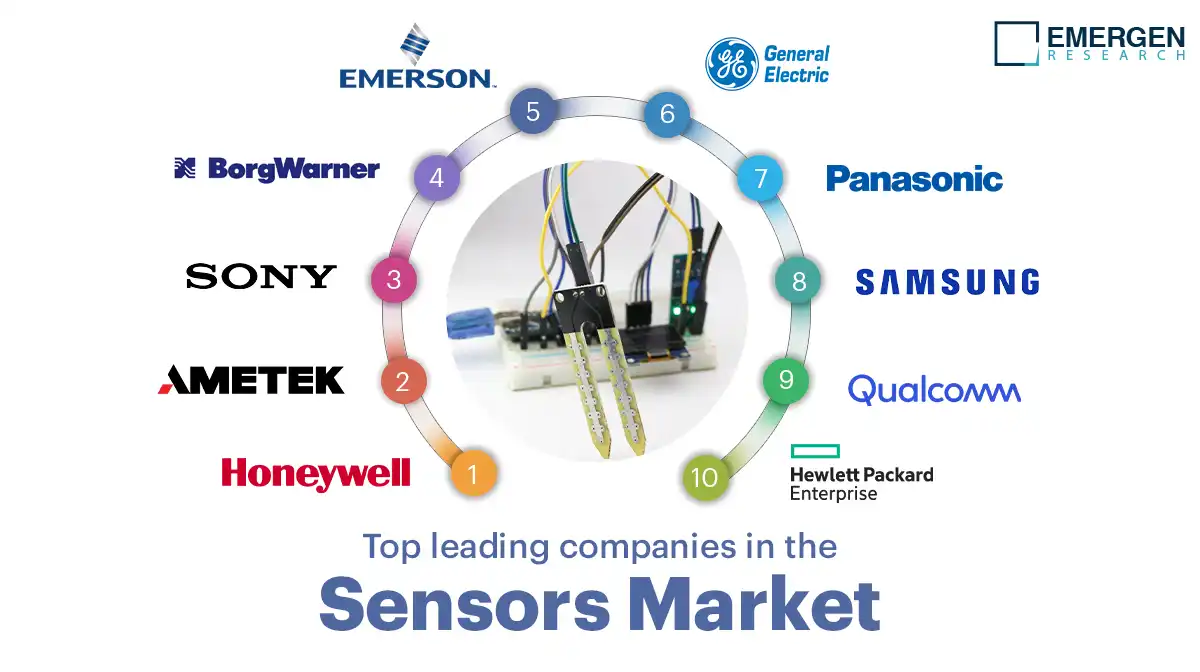
Protecting intellectual property (IP) is crucial for any technology company, especially one developing innovative sensor technologies. A strong IP portfolio safeguards your inventions, fosters trust with investors, and builds a sustainable competitive advantage. Failing to adequately protect your IP can lead to imitation, lost market share, and diminished profitability.Different methods of IP protection offer varying degrees of protection and duration.
Understanding these nuances is vital for strategizing your IP portfolio effectively. This involves selecting the most suitable protections for your specific sensor innovations and implementing a robust management system.
Importance of Protecting Sensor Technology Innovations
Sensor technology innovations are often complex and involve intricate designs and algorithms. Protecting these innovations is critical to preventing competitors from copying your work, enabling you to recoup development costs, and establishing your company as a leader in the field. Strong IP protection builds credibility and encourages investment.
Methods of Protecting Intellectual Property Rights
Several methods can protect your sensor technology innovations. Patents grant exclusive rights to use, make, sell, and import an invention for a set period. Trade secrets safeguard confidential information that gives a business a competitive edge. Trademarks protect brand names and logos associated with your sensors. Copyrights protect original works of authorship, such as software or documentation related to your sensors.
Strategies for Managing Intellectual Property Assets
Effective management of your IP assets is critical for maximizing their value and minimizing risks. This involves creating a comprehensive IP strategy, documenting all IP assets, and establishing clear ownership and usage policies. Maintaining thorough records of all IP filings, licenses, and agreements is essential for compliance and future litigation. Regular review and updating of the IP strategy in response to technological advancements and market changes is also vital.
Process of Filing Patents and Trademarks for Sensor Tech Inventions
Filing patents and trademarks for sensor technology inventions requires careful planning and execution. The patent application process involves identifying patentable aspects of the invention, drafting clear and concise specifications, and submitting the application to the relevant patent office. Similarly, trademark applications involve selecting a suitable mark, conducting trademark searches, and filing the application with the relevant trademark office.
Consulting with intellectual property attorneys is highly recommended throughout this process to ensure compliance and maximize the likelihood of success.
Comparison of Intellectual Property Protection Methods
| Method | Description | Cost | Duration of Protection ||—————–|—————————————————————————————————————————————————|———————————————|—————————————————————————————————————————|| Patents | Exclusive rights to use, make, sell, and import an invention.
| Moderate to high (depending on complexity) | 20 years from the filing date for utility patents; 15 years from the grant date for design patents.
|| Trade Secrets | Confidential information providing a competitive edge. | Low to moderate (ongoing costs for protection) | Indefinite, as long as the information remains confidential and provides a competitive edge.
|| Trademarks | Protect brand names and logos. | Moderate to high (depending on complexity) | 10 years from the registration date, renewable indefinitely.
|| Copyrights | Protect original works of authorship, such as software or documentation related to your sensors.
| Low | Life of the author plus 70 years.
|
Best Practices for Maintaining Intellectual Property Records
Maintaining comprehensive records of all intellectual property filings, licenses, and agreements is essential. Use a dedicated system to track all IP assets, including dates, costs, and relevant documentation. Regularly review and update records to ensure accuracy and completeness. Maintain digital copies of all documents for easy access and searchability. Establish clear procedures for managing and controlling access to IP records.
This is crucial for preventing unauthorized use or disclosure of sensitive information.
Summary
Launching and leading a sensor tech company involves a multifaceted approach encompassing market analysis, company structure, product development, manufacturing, and sales strategies. Success hinges on understanding the market dynamics, securing appropriate funding, building a capable team, and navigating regulatory hurdles. By carefully considering these elements, entrepreneurs can increase their chances of establishing a thriving sensor tech company.

